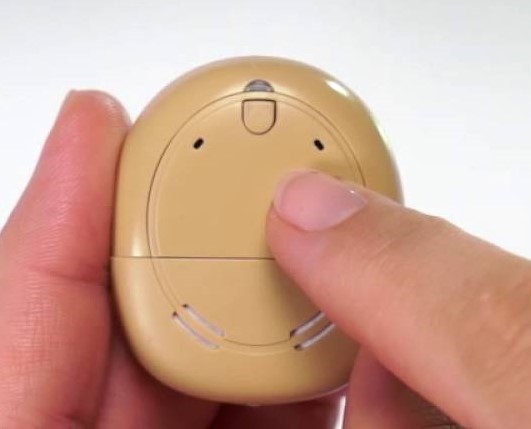February 6, 2017, just one day out of my life, but with so many expectations hanging on it that I was reluctant to get out of bed.
Three weeks and four days after my cochlear implant (CI) surgery, this was the day of “switch on”, the activation of the device – and potentially the dawn of a new hearing life according to the messages of encouragement I’d been receiving for months from people who had been implanted. You won’t believe how your life will change, the new world ahead of you, they wrote. It was a very high bar.
My family and friends were also looking forward to the activation. These were the people who live with my hearing loss, who repeat half of what they say to me, who speak louder or softer depending on my requests, who point out sounds that I need to hear (car coming!) and who let other sounds, unimportant to the moment, simply pass me by. These are my hearing people who are hoping that, soon, I might be able to hear like them. An unbelievably high bar.
I . As we drove to the hospital for the appointment, I settled on middle-bar expectations. At one end of the scale, I felt confident I would hear something, like bells, whistles, beeps. At the other end, I know people who were using the phone almost immediately. But I wasn’t planning any phone calls that day with the new processor. My goals were simple: learn how to get the Kanso Sound Processor on and off, hear something, and maybe—dare I hope for this—to understand what people were saying with the help of speechreading.
The Hearing Husband and I crammed into the audiologist’s office. Doug was filming the activation; he was so excited that I hoped he could keep the camera steady in the event of any big, teary aha moment. My other worry was that I’m a public speaker and actor, and my sort tend to perk up and ‘perform’ when there’s a camera or audience; I wanted to be honest and focused on the activation, not the creation of an emotional Facebook video.
We quickly got down to business. Rebecca, the audiologist, connected the sound processor with the computer to ensure the electrodes are doing their job and receiving signals from the sound processor.
Ah, my beautiful new processor; since I had last seen the dummy version, the Kanso had grown—in my mind—to the size of a free-run dinosaur egg, but in reality it was like a small, flat chicken egg. After we practiced turning it on (easy) and off (slightly less so), my hand moved the device slowly to the general area of slight swelling on my head. My fumbling was short-lived because when the Kanso gets close to that sweet spot, it almost jumps into place—the magnets are powerful.
All 22 electrodes in that “perfect 1 ½ turns” had reported for active duty; this was good news. Setting the volume level turned out to be the most difficult task of the day, because my tinnitus was in full swing. Rebecca ‘played’ a series of either beeps, and I had to hold up the corresponding number of fingers, 2, 3 or 4.
I can’t speak for all people with hearing loss, but in hearing ‘tests’, many of us operate with our darker nature—we try to cheat. There are many reasons, but it boils down to not wanting to give the wrong answer, or to prove we don’t have hearing loss after all. But here I was, demonstrably deaf and recently implanted—there was no reason to hide what I could or could not ‘hear’. Still, I wanted to hold up the correct number of fingers, regardless of what I heard.
The first few beeps went well. But then they got quieter and my tinnitus got louder, so I started wiggling a few friendly fingers at her in the hope that she’d see the correct combination. She’d ask, “Is that 3 or 4 fingers?” and I’d reply “yes.” But Rebecca is used to people like me and she managed to get an accurate reading.
